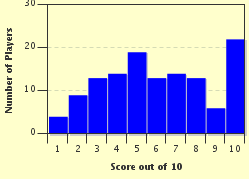Quiz Answer Key and Fun Facts
1. In which century was the term "Viking" first used by historians to describe the Scandinavian raiders as far back as the 8th century?
2. The first Viking raid on the British Isles happened at Lindisfarne but in what year?
3. All the souls of Viking warriors who died in battle were taken to Valhalla.
4. The Vikings were renowned shipbuilders. Their longships have become an integral part of the Viking image but what were their smaller cargo ships called?
5. The Emperors of which Eastern empire employed Vikings as their bodyguards?
6. Which modern day Irish city became a centre for the Viking slave trade?
7. There were three social classes in most Viking societies which would be the equivalent of Upper, Middle and Lower classes today. Which section of society was the 'Middle' class?
8. Berserkers were feared Viking warriors who were said to go in to battle wearing the pelt of which animal?
9. The Vikings were known for fighting in a shield-wall formation and they had a number of manoeuvres to try and break the enemy line. What tactic was known as the 'Svinfylking'?
10. Vikings fought with horned helmets.
Source: Author
ScottishGal
This quiz was reviewed by FunTrivia editor
gtho4 before going online.
Any errors found in FunTrivia content are routinely corrected through our feedback system.

